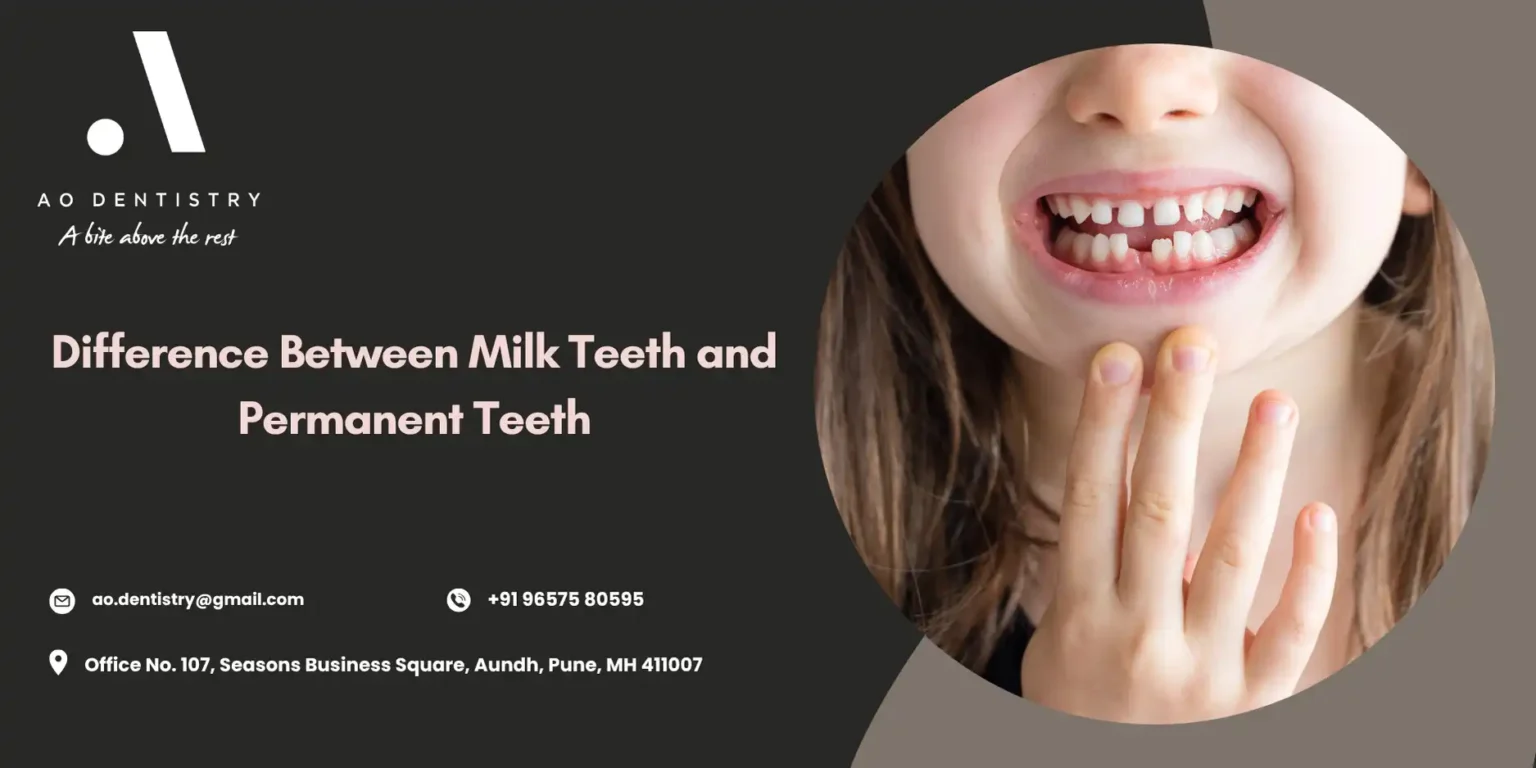We all know that humans get two different sets of teeth in their lifetime. Although understanding the difference between milk teeth and permanent teeth for oral health awareness of your little ones.
In this article, we will explore the following:
- Difference between milk teeth and permanent teeth
- What is the difference between milk teeth and permanent teeth
- Difference between primary and permanent teeth
Ready to dive in?
Are you confused between aligners and braces? Click here to know about aligners vs braces.
How to Use Mouthwash? Learn more about it in this blog.
What Are Milk Teeth?
Milk Teeth or Baby teeth are the first set of teeth that develop in children. These baby teeth start coming out when the child is 6 months old. This process continues until about 3 years old.
Normally, they will have all 20 milk teeth by age 3.
The following are the types of teeth that milk teeth consist of :
- 8 front teeth for biting or cutting
- 4 pointed teeth for ripping
- 8 back teeth for grinding
Baby teeth act as a placeholder for the upcoming permanent teeth. Not only that, but they play a crucial role in children’s development, including eating habits, speech development, and facial structure.
Want to know what are the different types of crown? Read here
How to Stop Tooth Decay from Spreading? Read here
What Are Permanent Teeth?
Before we move on to the difference between permanent teeth and temporary teeth , or difference between milk teeth and permanent teeth. Let’s understand what permanent teeth are.
Permanent teeth are the final set of teeth that come after the milk teeth fall out. This transition usually starts around the age of 6, and the all permanent molars show up by age 14.
The following are the types of teeth that permanent teeth consist of :
- 8 incisors
- 4 canines
- 8 premolar teeth between canines and molars
- 12 molars, including 4 wisdom teeth, which appear late
This is a total of 32 permanent teeth.
Here is what all you can eat after tooth extraction.
Read more about what causes yellow teeth here
Difference Between Milk Teeth and Permanent Teeth
Do the last searches on the internet look like these?
“Difference between permanent teeth and temporary teeth”
“Difference between milk teeth and permanent teeth”
“What is the difference between milk teeth and permanent teeth?”
“Difference between primary and permanent teeth”
Let us answer to all your queries. Understanding the differences between milk teeth and permanent teeth helps parents to provide the right care at the right age.
Here are the key points highlighting the difference between primary and permanent teeth
Size and structure:
Milk teeth are smaller than permanent teeth. They have a thinner protective layer called enamel and small roots. Whereas permanent teeth are larger, have stronger enamel, and larger roots that are anchored deeply in the jaw.
Color of teeth:
Baby teeth are typically whiter in appearance than permanent teeth as they have thin layer of dentin. Permanent are more yellowish as there is a thick layer of dentin.
Function:
Both types of teeth serve a primary function of chewing and speaking, but the key difference between permanent teeth and temporary teeth is that temporary teeth also act as a placeholder for the upcoming permanent teeth. This is one of the functional primary difference between permanent teeth and temporary teeth
Durability
Another key difference between milk teeth and permanent teeth is durability. Temporary teeth fall out on their own as permanent teeth come out. Permanent teeth are for a lifetime if taken care of properly. They also have stronger enamel and roots
Number
Children have around 20 milk teeth while adults have 32 permanent teeth. This point highlights the difference between permanent teeth and temporary teeth.
Looking for home remedies for swollen gums Click here.
What is the difference between milk teeth and permanent teeth? Here is the breakdown in tabular format
| Feature | Milk teeth | permanent teeth |
| Number of teeth | 20 | 32 |
| Size | Small | Big |
| Color | Super white | Yellowish |
| Toughness | Less enamel | More Enamel |
| Rooth size | Short | Long |
| How long do they last | 6-12 years | Lifelong with proper care |
| When they appear | At 6 months old | At 6 years old |
Why Are Milk Teeth Important If They’re Temporary?
When we look at the difference between permanent teeth and temporary teeth, many people feel we should not take enough care of milk teeth as they are not permanent. But let us clear this myth and break down why milk teeth are important:
- Nutrition: During the important growth years of children, baby teeth help them chew properly and build good eating habits
- Speech: Temporary teeth play a crucial role in speech development, as certain sounds and words require the tongue to touch the teeth.
- Placeholders: Temporary teeth act as a placeholder for permanent teeth. Losing the baby teeth early may result in crowding and malocclusion.
- Development of the jaw: Baby teeth structure is like a guiding map for permanent teeth and jaw structure
While learning the difference between primary and permanent teeth, it’s also important to learn how to take care of Milk teeth or Baby teeth
Read to know if RCT is Painful
Dental Care Tips
Here are a few practical tips for both temporary teeth as well as permanent teeth. Here are few dental care tips for best possible dental health
For Milk Teeth:
- Start the cleaning habit even before the teeth appear
- Use soft bristled toothbrush and water for children under age 2
- Incorporate fluoride-free toothpaste for kids under 3
- Make sure children brush under parents’ supervision until they understand spitting
- Parents should visit the dentist within 6 months of the first tooth of the baby
For Permanent Teeth:
- Brush twice daily with fluoride toothpaste
- Remove plaque daily with floss
- Limit consumption of acidic foods and sugary drinks
- Make sure you visit the dentist every 6 months
- Treatment like dental sealants can help in protecting new permanent teeth
Here’s how to Stop Grinding Teeth in Sleep Naturally
FAQs
What is the difference between milk and permanent teeth?
Baby teeth start small and white, serving kids until they fall out. Adult teeth grow bigger in paces of milk teeth with a natural yellowish shade, numbering 32 teeth instead of 20 milk teeth.
What is the difference between milk teeth and baby teeth?
The meaning of both terms, Milk teeth and baby teeth, is exactly the same.
How are baby teeth different from normal teeth?
Baby teeth come with thin enamel, short roots, and a small, white appearance. Adult teeth grow bigger, with thick enamel and deep roots to stay strong in the jawbone.
Which teeth are called milk teeth?
The first 20 teeth in a child’s mouth are milk teeth. These teeth come out one by one to make space for permanent teeth.
Don’t take your kid’s teeth for granted, whether it’s permanent or temporary. AO Dentistry is known for its excellent quality dental care for all ages.
Take your first step today and book a consultation with AO Dentistry at +91 96575 80595.


